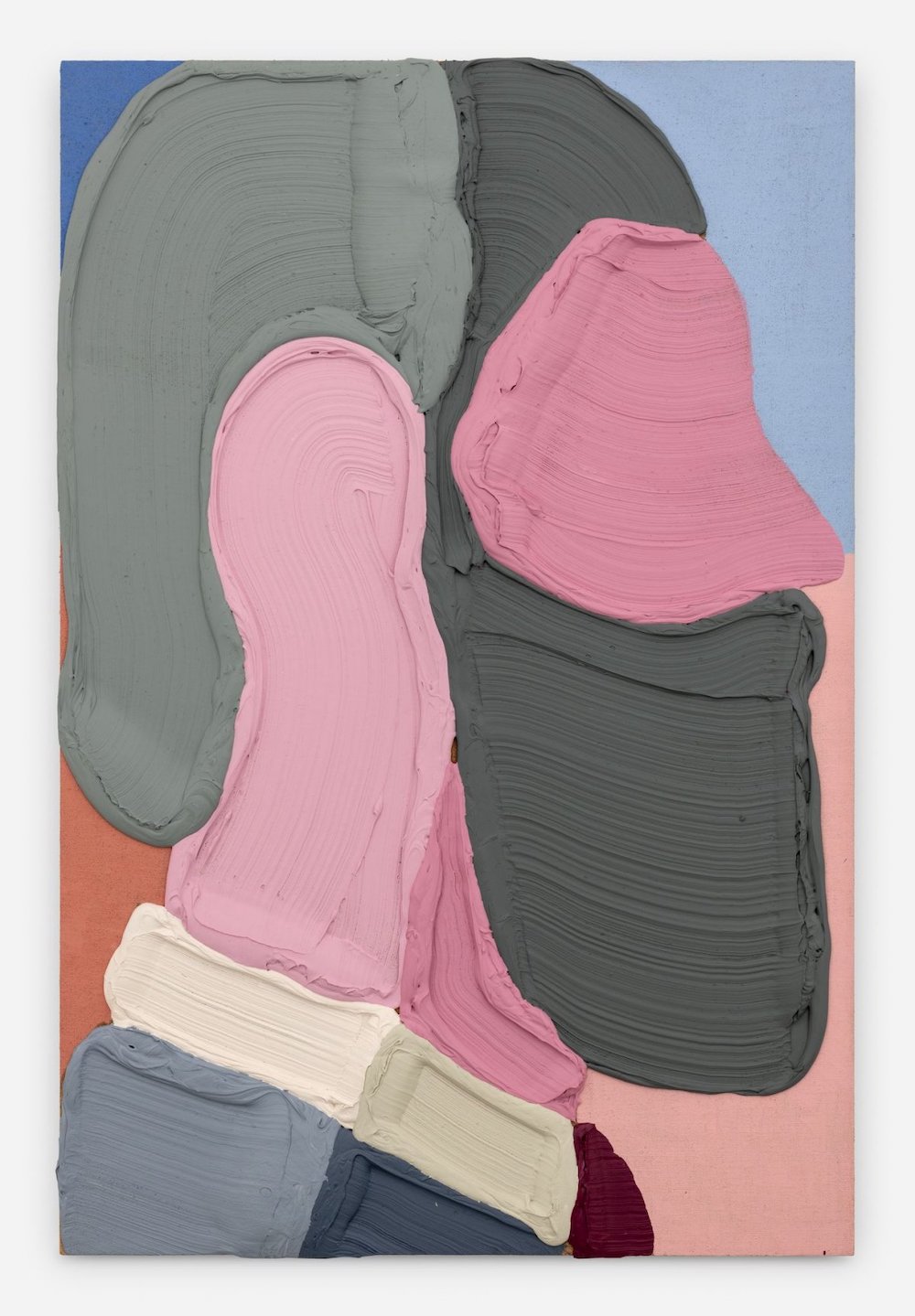José Lerma: Guerras Tibias | Almine Rech
José Lerma’s striking recent paintings, several of which are on show downstairs at Almine Rech at the moment, are both austere and abundant. Austere in their extreme economy of huge brushstrokes, but abundant in the sheer quantity of paint used to make them. The artist achieves this effect by using a commercial broom to apply acrylic paint directly to a rough burlap canvas.
The head of each subject, most of which are captured in profile, fills each frame almost exactly. The paintings are all apparently named after the Puerto Rico-based artist’s sitters - Alena, Carla Rosa, Rafael Luis - but given he has so few brushstrokes to work with, almost all facial features are obliterated in the large sweeps of acrylic paint. They’re depersonalised but also, somehow, characterful.
 Rafael Luis (2022)
Rafael Luis (2022)
The physicality of Lerma’s paint, assembling his portraits in thick, ice-creamy swaths, is the thing that captured me. He favours pastel shades, powdery pinks and blues and yellows, and absolutely blank backgrounds. There’s a brusque physicality in these works - you can feel the strain in the individual bristles of his broom picked out in the paint - but somehow they’re also pretty and restful.
The show notes point out that the bold profiles ape the format of Renaissance portraiture, specifically Piero della Francesca’s double portrait of the Duke and Duchess of Urbino. But my imagination wandered from Florence and the Uffizi, where the duke and duchess live, to Milan, where you can see Giorgio Morandi’s 1925 self portrait.
There’s something in the obliterated face through economy of brushstrokes, and restful colours, that links the two in my mind. The notes add that Lerma’s portraits share a “profound quietude” - I agree, maybe that’s why it made me think of Morandi, the quietest artist I can think of.
José Lerma: Guerras Tibias is at Almine Rech (London). 11 January - 18 February 2023